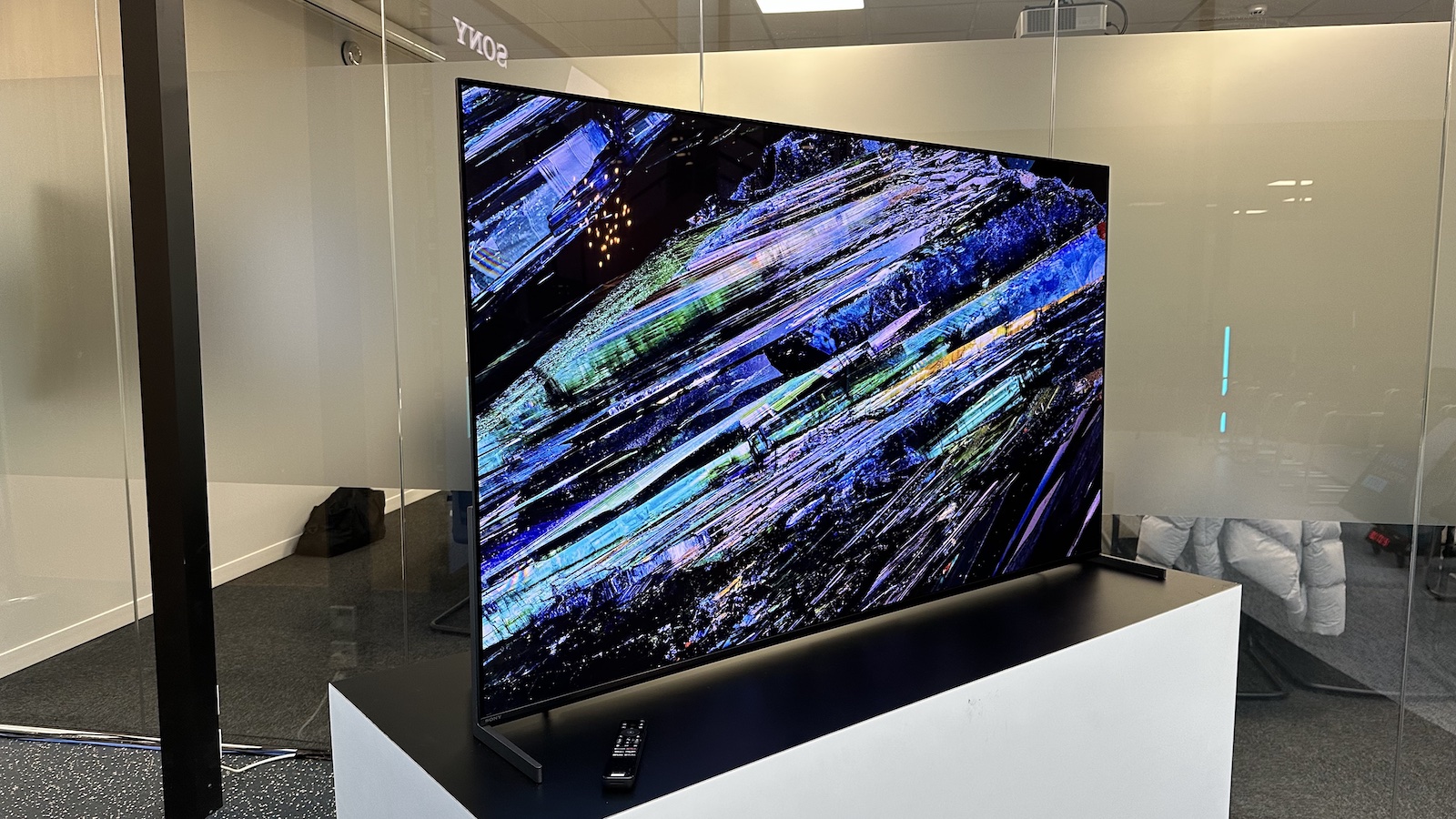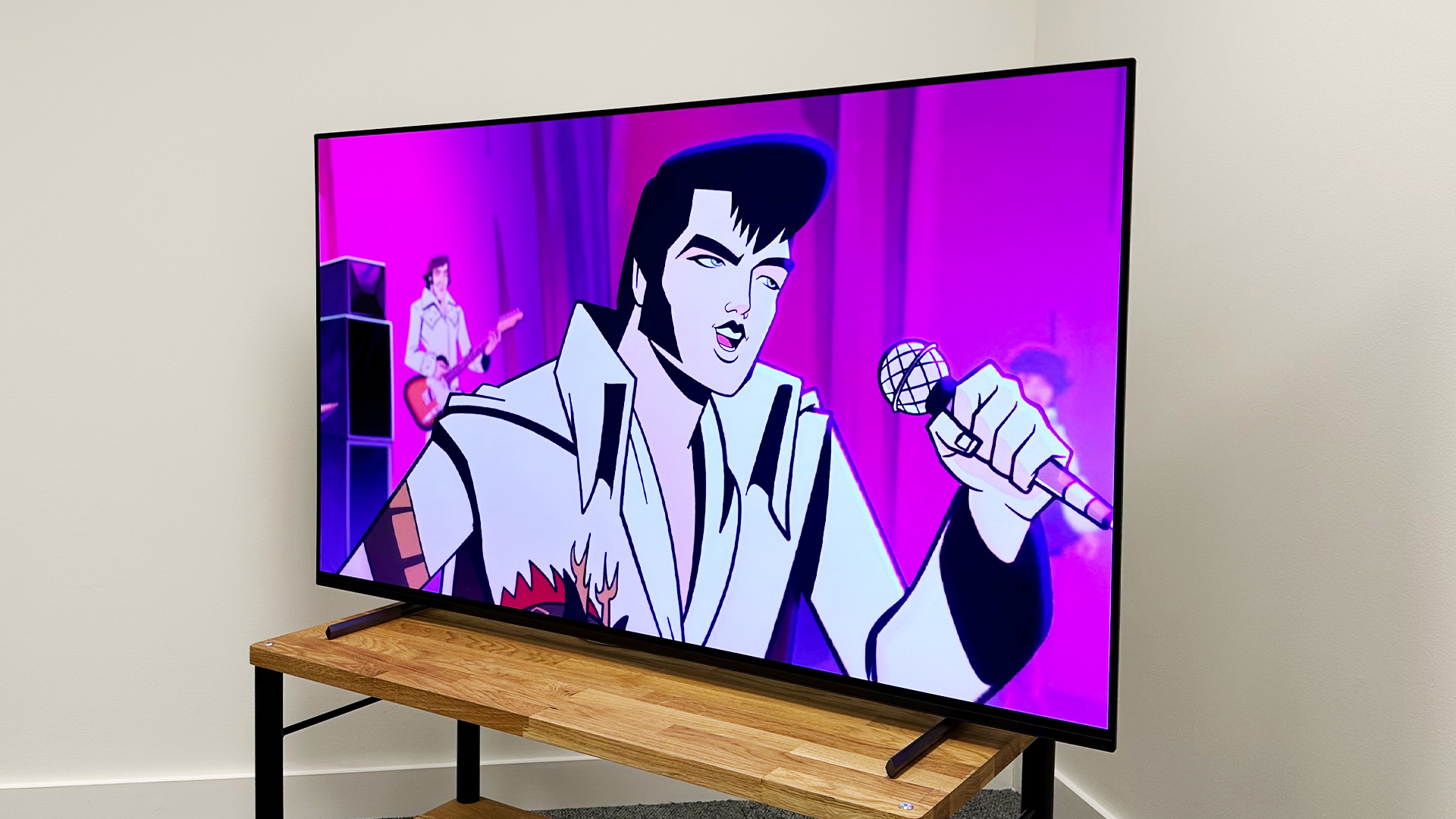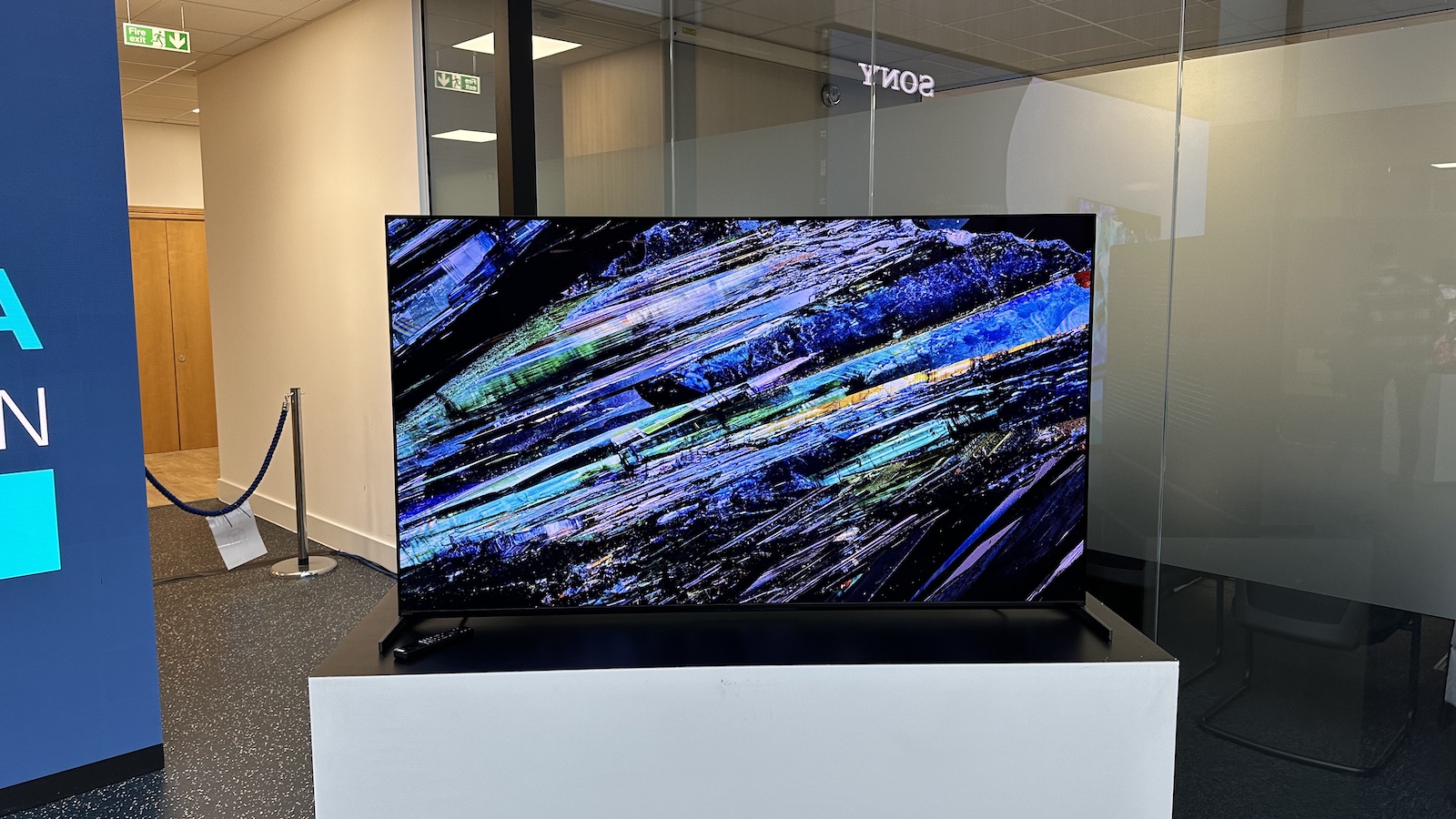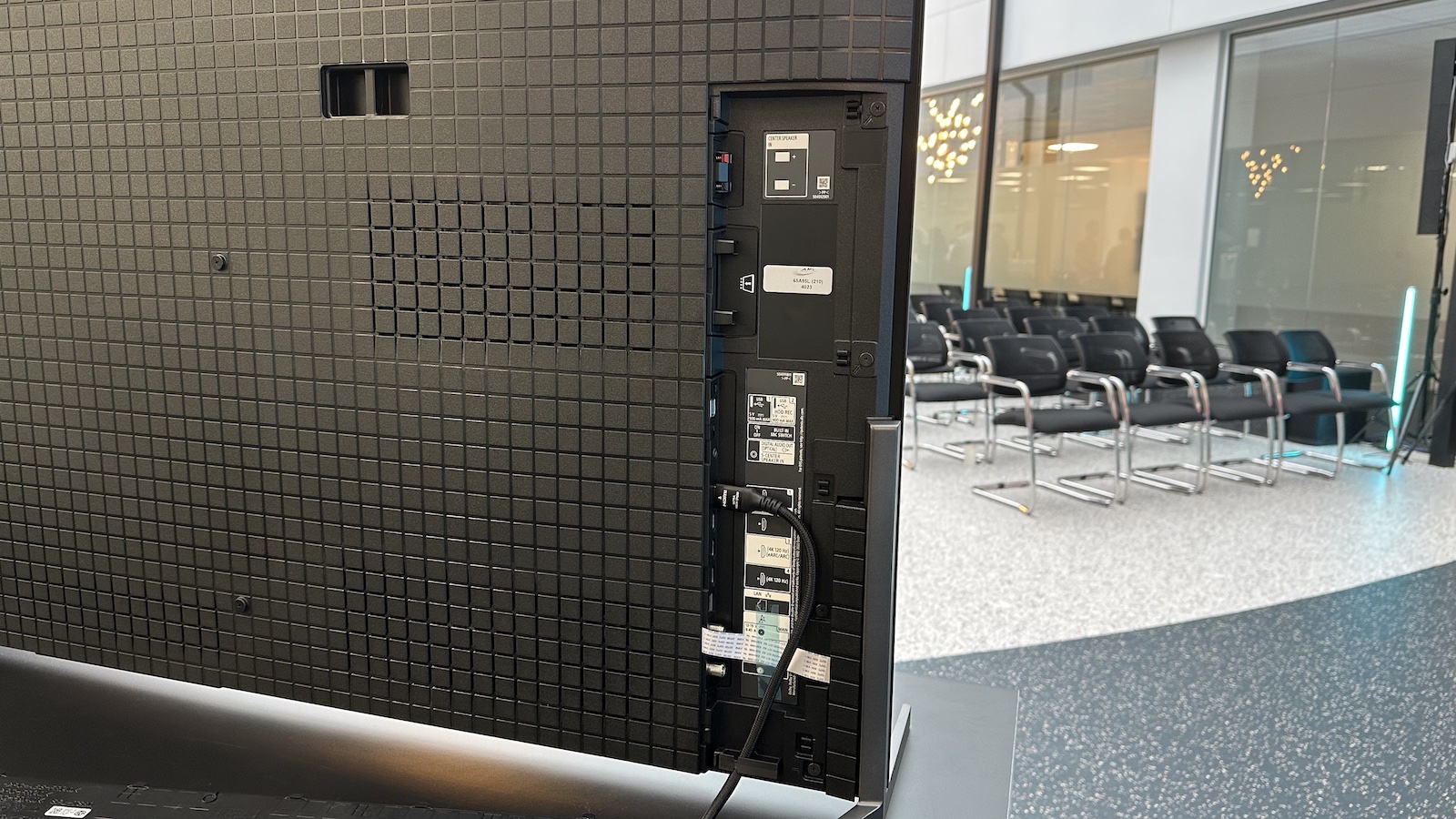
As you would expect, Sony's 2023 OLED TV range has all bases covered. There are high-end super-sets if money is no object, but also more modest TVs aimed at the rest of us. How do they compare though, and which would be best for you?
Here we're comparing the step-down OLED model, the A80L, with the range-topping A95L. Should you remortgage in order to get your mitts on the A95L? Or will the A80L suit you just fine? Let's find out.
Sony A80L vs A95L: price
We only have pricing for the A80L at the moment. The 55-inch A80L costs £2399 / $1900, the 65-inch is £2999 / $2600, the 77-inch is £4499 / $3600, and the 83-inch is £5499 / $5500. Australian pricing is still TBC.
The A95L pricing hasn't been confirmed yet, but as the range-topper it's certain to be more expensive than the A80L. The A95K that it replaces launched at £2699 / $3000 for the 55-inch model (which wasn’t released in Australia) and £3499 / $4000 / AU$5995 for the 65-inch version. We anticipate the A95L being priced higher than this.
The A95L will also be available in a 77-inch size, but there’s never before been a 77-inch QD-OLED so it’s very hard to predict how much it might cost. What we would say is that the price gaps tend to be disproportionately large when you get to these sorts of sizes. Couple this with the fact that the price of everything is going up, and we wouldn’t be surprised if the 77-inch A95L turned out to cost at least £5499 / $6000 / AU$10,000. Ouch.
Sony A80L vs A95L: design

The A95L's predecessor, the A95K, featured an innovative new stand that could be positioned either in front of or behind the TV – with the former arrangement, you could sit the telly flush to the wall, and with the latter, it was out of sight and out of mind. But this stand was heavy, which made both delivery and setup a pain, which might be why Sony has scrapped it for the A95L in favour of simpler, lighter feet that aren't unlike those of the A80L.
However, all sizes of the A80L feature feet that can be positioned at the edges of the TV to make it more stable, or closer together to fit on a narrower piece of furniture. The 77-inch A95L has the same option, but with the 55- and 65-inch models, the feet can only be positioned right at the TV's extremities, which will limit the number of TV cabinets it can be used with. Shame.
But like the A80L, the A95L's feet can be positioned with the TV raised a couple of inches to accommodate a soundbar.
Both TVs are slim, though because of the screen-housed sound system (and the A95L's heatsink), they're not the slimmest around.
Sony A80L vs A95L: features

So if the two sets look quite similar, what are the differences between them? The big one is the screen.
The A95L features a QD-OLED screen, which combines OLED technology with Samsung's Quantum Dot tech. This aims to combine the absolute black levels of OLED with more vibrant colours and a higher peak brightness than standard OLED alone can achieve. The A95L is a second-gen QD-OLED display – Sony claims it's capable of a peak brightness that's up to twice as much as that of 2022's A95K.
It also boasts its own heat diffusion sheet (aka a heatsink) and bespoke thermal analysis via the set’s Cognitive Processor XR. Like the A80L, the A95L's Cognitive Processor XR offers a new feature called XR Clear Image, which cleans up source material for more accurate 4K upscaling.
The A95L has the same new Game Menu feature as the A80L, which brings together all the gaming-specific modes so you can switch them on or off and tweak them. On the A95L, though, this Game Menu has extra features, most notably one that allows you to reduce the size of the gaming screen for window-in-window-style gaming (a smaller gaming window means less eye movement and faster response times for competitive gamers). The A95L is also the only one of Sony's new TV range to support Dolby Vision gaming, and the only one to get Multi View, which lets you split the screen in two so you can game on one side and follow a gaming tutorial on YouTube on the other.
Both it and the A80L support 4K/120Hz gaming, VRR and ALLM, so gamers are well catered for. But in terms of connections, they're better off with the A95L. It has four HDMI 2.1 sockets, while the A80L's four HDMIs are split (two HDMI 2.1, two standard HDMI 2.0). With one of the A80L's ports being the eARC for a soundbar, that leaves only one fully-specced port for a PS5, Xbox Series X or PC. That's fine for most people, but if you have more than one games console on the go, it's nice not to have to unplug one in order to use another.
The A95L is the only of Sony's TVs to come with the Bravia CAM accessory (it's an optional extra for its other TVs). This clips to the TV's top edge and unlocks a host of smart features, including video calling, automatic power saving and picture and sound optimisation based on the specific spot in the room that you're sitting in.
Both TVs run the Google TV operating systems, with all the usual streaming suspects onboard: Prime Video, Disney+, iPlayer, Apple TV and Netflix (though the latter's content still doesn't show up in the recommendations, which is a major oversight). All the streaming apps deliver sound and video in the formats that they should too, including Disney+ in Dolby Atmos, which has been missing from the last couple of generations of Sony TVs.
Both TVs support Dolby Vision HDR alongside the more common HDR10 and HLG formats, though HDR10+ is lacking. And both have the Sony Bravia Core app, which streams films in higher quality than rival services.
Both also have Sony's Acoustic Surface Audio+ sound system, which uses actuators placed behind the screen to make sound come from the exact part of the picture.
Sony A80L vs A95L: picture

Now, we haven't tested the A95L, so can't comment conclusively on its picture quality. But we have gone hands-on with it at the launch event, so do have some idea of how it will perform.
So how did it look? In a word, awesome. The A95L looked significantly brighter and more dynamic than the A95K it was positioned next to, but never in an artificial, trying-too-hard kind of way. That's quite some achievement considering it was a prototype that could only run in its Vivid picture mode, which isn't the most natural of presets, and certainly not one you'd use at home for everyday viewing.
Despite this, the A95L still displays a subtle colour balance, with crisp definition, sharp edges and a great level of detail. Add in the extra punch and dynamism, and it made for a thoroughly convincing image with plenty of immersion.
But the A80L is an excellent performer in its own right. It boasts bright, popping colours but still with plenty of nuance in more delicate areas such as skin tones. There's no compromise in the level of dynamism, making for a picture with a real sense of depth. Detail is outstanding in both light and dark extremes, and – as with all recent Sony TVs – the motion processing is second to none (Sony really is the best in the business in this regard).
Upscaling is a real highlight too, delivering a picture that's sharp and detailed without any hint of how much processing has actually been done. That XR Clear Image feature is being put to good use.
The one downside is that certain modes do involve a bit of black crush, which loses some dark detail. But it's a minor niggle for a picture quality that has plenty going for it.
Sony A80L vs A95L: sound

Another caveat: the A95L was muted during our demo, so we haven't heard how it sounds. But as far as we're aware it uses the same Acoustic Surface Audio+ tech as the A95K, which is a slightly tweaked version of the technology that's been used in all Sony OLED TVs and is present in the A80L.
This uses actuators behind the panel that vibrate the screen in order to make sound, with two woofers adding bass. This approach means dialogue emerges from the characters' mouths while gunshots come straight from the barrel of a gun.
The A95K uses larger actuators than Sony's standard OLED TVs – these actuators are optimised for the QD-OLED display. We would think Sony would employ the same in the A95L, because they sound superb. The A95K has plenty of weight and punch, and it's always controlled, even at high volumes. Sound is delivered with a winning level of detail and clarity, and the soundstage expands a good deal beyond the confines of the TV.
The A80L, by contrast, is a bit light on bass, lacking the depth of its pricier stablemate. But it too remains relatively composed even when you crank the volume up, and boasts an open, spacious soundstage with decent into-the-room projection.
Sony A80L vs A95L: early verdict
We haven't tested the Sony A95L, so we're assuming a lot based on the spec sheet and the past performance of Sony's A95K and previous sets. But it's shaping up to be one of the most exciting TVs of 2023. It promises to be significantly brighter than the A95K (courtesy of a second-generation QD-OLED display and heatsink), with better gaming features and some exclusive perks. But it won't come cheap.
We have tested the A80L, and we awarded it the full five stars. It offers superb visuals, great sound and a more versatile design than the A95L (at more sizes, anyway). If you can't afford – or don't want to spend big on – the A95L, the A80L won't leave you feeling shortchanged.
We will, though, update this page once we've had the A95L for a comprehensive, comparative review.
MORE:
How does the A95L stack up against LG's finest? LG G3 vs Sony A95L
Here is its predecessor: Sony A95K review
Check out the best TVs available right now







